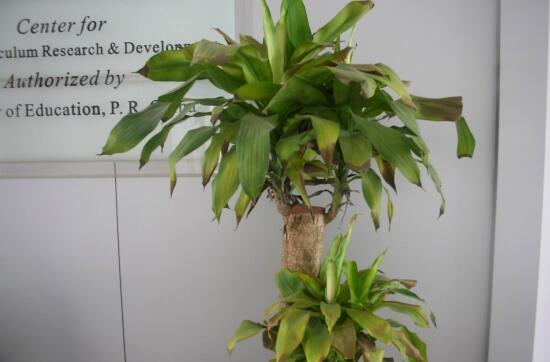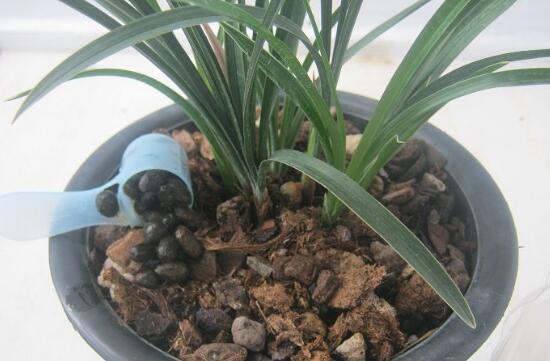Will Brazilian iron trees grow worms? Brazilian iron tree pest control / anthrax spray
Brazilian iron tree, which has become popular in recent years, is a beautiful foliage plant that has appeared in many people's families. However, with the increase in the number of people raising Brazilian iron trees, and some problems, such as more diseases and insect pests, will Brazilian iron trees grow worms? The following are several kinds of Brazilian iron tree pest control, follow the editor to have a look!
Will the Brazilian iron tree grow worms? yes

In life, many people keep Brazilian iron tree, but because there are so many novices, it will inevitably be improperly maintained, as a result, it will grow worms. It is understood that the main diseases and insect pests of Brazilian iron trees are: sugarcane moth, red spider, bark beetle, anthracnose, blight and gray mold. Their appearance affects the health of the plant, so as soon as it is found, spray control should be carried out immediately.
II. Prevention and control of diseases and insect pests in Brazil
1. Red spider
To say that the Brazilian iron tree worm, the first consideration should be the red spider, because it is the enemy of foliage plants. It is understood that red spiders mainly use mouthparts to pierce the leaves of the Brazilian iron tree to suck juice, so that the chlorophyll of the plant is destroyed, causing the leaves of the Brazilian iron tree to turn yellow and even detach.
Prevention and control methods: for red spiders, we should always take precautions and check the back of leaves in time. When individual leaves are damaged, insect leaves can be removed; when more leaves are damaged, propargite, dimethoate, Huachongjing and other drugs should be sprayed as soon as possible to control them.
2. Spodoptera litura
Among the pests of Brazilian iron tree, sugarcane moth needs to be considered, which is a potentially dangerous insect. After being attacked by the sugarcane moth, the fleshy part under the epidermis of the Brazilian iron tree is completely emptied and replaced with insect dung, and the plant will face death.
Control methods: after the discovery of sugarcane moth, quick-killing agents such as chrysanthemum EC can be used to irrigate the injured parts of the stem, and trichlorfon is used to make poisonous soil and sprinkle it in the topsoil of flowerpots.
3. For grain wood bark beetle
A pest that harms the Brazilian iron tree, it mostly appears in the growing period, the harm is very serious. To the grain wood bark beetle, the body size is small, the insect feces is slightly fine, and usually occurs with the sugarcane moth. Therefore, after being attacked by the insect, the harm of the victim is basically similar to that of the sugarcane moth.
Control method: once it is found that the grain beetle should be sprayed immediately, 40% omethoate EC 1000 times mixed with 90% trichlorfon 1000 times solution can be effective every 7 to 10 days, 4-5 times in a row.
4. Anthrax
Anthracnose is one of the most important diseases and insect pests in Brazil, which is easy to occur in rainy season, poor indoor ventilation and excessive humidity. If the leaf tip of the Brazilian iron tree turns black and the leaves have yellow spots, it should be suffering from anthracnose.
Prevention and control method: after anthracnose is confirmed, spray 75% chlorothalonil 600 times or 50% thiram wettable powder 500 times, once every 7 to 10 days, three times in a row. In addition, fertilizing once every 20 to 30 days during the peak growing season can effectively reduce the occurrence of this disease.
5. Epidemic disease
Another Brazilian iron tree disease, which mainly harms the leaves and the ground of the plant, resulting in water-immersed spots on the diseased leaves, then quickly expands to black-brown rot, resulting in fallen leaves, sometimes with a thin white mildew layer on the damaged surface of the leaves.
Prevention and treatment: cut off the diseased leaves in time and burn them or bury them in soil in order to reduce the source of the disease. When the disease occurs, it can be sprayed with 72.2% Pulicol water agent 600-700 times for prevention and treatment.
6. Grey mold
In the process of breeding Brazilian iron tree, if the soil is too wet, lack of light, and poor ventilation, it is easy to suffer from gray mold. After suffering from the disease, the leaves and petioles of the Brazilian iron tree are gray and water-stained, and even the tissue softens to rot.
Prevention and treatment methods: find the above symptoms, cut off the diseased leaves in time to reduce the source of the disease; at the initial stage of the disease, 1000 times of methyl topiramate wettable powder can be sprayed for prevention and treatment.
Generally speaking, the breeding method of Brazilian iron tree is not difficult, as long as we take good care of it, bugs will not come to us. With regard to the prevention and control of Brazilian iron tree diseases and insect pests, the editor has introduced this. I believe that if you encounter Brazilian iron tree worms or get sick again, you should know how to do it! Finally, may everyone's Brazilian iron tree grow beautifully.
Will the white pepper grass grow worms, pest control / 2 insects and 3 diseases spray
Zanthoxylum bungeanum, a recently introduced small foliage plant, has small and exquisite plants, white and green leaves, and looks very beautiful. It has appeared in many people's families. However, with the increase in the number of people raising white pepper grass, some questions, such as how to control diseases and insect pests, are also asked by more and more people, will the white pepper grass grow worms? The following are several kinds of pepper grass pest control, let's go and have a look!
Will the white pepper grass grow worms? yes
Generally speaking, the white pepper grass does not have any diseases and insect pests, but in the process of growth, because of improper maintenance, poor environment and other reasons, the plant will inevitably give birth to shell insects and red spiders; when the soil has accumulated water for a long time and the watering is too cold, you will suffer from root rot. As soon as it is discovered, everyone should spray immediately to prevent and cure it.
II. Control of diseases and insect pests of Zanthoxylum bungeanum
1. Scale insects
In the process of breeding, Capsicum bungeanum seldom grows insects, but when the environment is not ventilated and properly maintained, it is occasionally damaged by shell insects. The insect sucks the sap from leaves and twigs with stinging mouthparts. If it is not noticed for a long time, it will lose its leaves.
Prevention and control methods: when a small amount of scale insects are found, they should be brushed off manually in time, or washed with water, and placed in a ventilated place; when there are too many scale insects, the medicine should be sprayed, and the agent can be used to kill scale 800-1000 times, generally, the control effect can be achieved at one time.
2. Red spider
To say that the white pepper grass worm, excluding shell insects, is basically the red spider, after all, it is the common enemy of foliage plants. The insect mainly uses mouthparts to pierce the juice into the leaves of Capsicum bungeanum, which destroys the chlorophyll of the plant and causes the leaves to turn yellow and even detach.
Prevention and control methods: for red spiders, we should always take precautions and check the back of leaves in time. When individual leaves are damaged, insect leaves can be removed; when more leaves are damaged, they can be treated with enemy killing, or they can be sprayed with anti-mite 25% EC 800x solution, 73% Ketate 2000 times liquid and other drugs.
3. Root rot
When there is too much watering, or there is no timely drainage in the rainy season, or when the watering is too cold, white pepper grass will also suffer from root rot. After suffering from the disease, the root of the plant will rot, and in severe cases, the whole plant may die.
Prevention and treatment: when the above diseases are found, if the condition is mild, you can spray 500 times Dysen zinc solution; if the decay is serious, throw it away directly.
4. Anthrax
Anthracnose is one of the diseases and insect pests of Zanthoxylum bungeanum, which is easy to occur in rainy season, poor indoor ventilation and excessive humidity. If the leaf tip blackens and the leaf has macula, it should be suffering from anthracnose.
Prevention and control method: after anthracnose is confirmed, spray 75% chlorothalonil 600 times or 50% thiram wettable powder 500 times, once every 7 to 10 days, three times in a row.
5. Grey mold
In the process of breeding white pepper grass, if the soil is too wet, lack of light, poor ventilation, it is also prone to gray mold. After suffering from the disease, the leaves and petioles of Capsicum mandshurica are grayish white, water-stained, and even the tissue softens to rot.
Prevention and treatment methods: find the above symptoms, cut off the diseased leaves in time to reduce the source of the disease; at the initial stage of the disease, 1000 times of methyl topiramate wettable powder can be sprayed for prevention and treatment.
Generally speaking, the breeding method of white pepper grass is not difficult, as long as we take good care of it, bugs will not come to us. With regard to the prevention and control of plant diseases and insect pests, the editor has introduced this. I believe that if you encounter the white pepper grass worm or get sick again, you should know how to do it! Finally, may everyone's white pepper grass grow beautifully.
Does Ruyi Queen like worms? pest control of Ruyi Empress / 2 insects and 3 diseases
As a beautiful foliage plant, Ruyi Queen has many functions. It is not only good-looking, but also can absorb formaldehyde, but also has a good use in medicine. But when the Queen of Ruyi is raised indoors, everyone is afraid of its worms. Does the Queen of Ruyi love worms? The following are several kinds of disease and pest control of Ruyi Queen, follow the editor to have a look.
Does the Queen of Ruyi like worms?
Generally speaking, Ruyi Queen is not easy to get worms, but in the case of improper maintenance and poor environment, Ruyi Queen will also grow worms and get sick. It is understood that the diseases and insect pests of Queen Ruyi are: shell insects, red spiders, anthrax, leaf spot, brown spot, their appearance will affect the health and beauty of the plant. As soon as it is found, it should be sprayed immediately to prevent and cure it.
Second, the disease and insect pest control of Queen Ruyi
1. Scale insects
To say that the queen of Ruyi grows a worm, it is usually a shell worm. The insect is small and often gathers together, which mainly damages the leaves of the plant, affects the photosynthesis of the plant, and causes the leaves of Queen Ruyi to turn yellow and hinder viewing.
Control methods: when a small amount of shell insects are found, they can be brushed off with a brush and then rinsed with water; when there are too many shell insects, spray 1000 times of omethoate in time to control them, once a week for 2 or 3 times in a row.
2. Red spider
In the environment of poor ventilation and poor light, the queen of Ruyi will also give birth to red spiders. The insect sucks juice into the leaves of Queen Ruyi with mouthparts, so that the chlorophyll of the plant is destroyed, the leaves show gray-yellow spots or patches, and the leaves become withered and yellow, or even fall off.
Prevention and treatment: usually should pay attention to the observation of flowers, found that the above symptoms, timely check the back of the leaves. When individual leaves are damaged, insect leaves can be removed; when more leaves are damaged, spraying anti-mite 25% EC 800x solution, 73% acarate 2000 times liquid and other drugs can be used for control.
3. Virus disease
In addition to the long worm, the Queen Ruyi will also get sick, of which the more common disease is called virus disease, which will harm the growth of plants. Symptoms: the leaves of Queen Ruyi will appear some irregular yellow spots, at the same time, the leaves will be deformed, curled or wrinkled, and even become deformed in serious cases.
Prevention and control methods: after finding the above diseases, spray 3000 times of cypermethrin in time, the control effect is excellent; in addition, we can also appropriately apply more flower fertilizer containing more K and P elements to increase its ability to resist the disease.
4. Root rot
In addition, in improper maintenance, such as in winter, if too much watering or poor drainage of basin soil, coupled with indoor darkness, Ruyi Queen is prone to root rot. Symptoms: the roots and stems of Queen Ruyi are black and rotten, and then the leaves of the plant will wither and spread quickly.
Prevention and treatment: first of all, cut off the rotten part of the Ruyi Empress, apply it with sulfur powder, and then replace it with fresh culture soil and replant it. After that, move the pot to a ventilated sunny place, and soon the Queen Ruyi will be back to health.
5. Leaf spot
When the indoor temperature fluctuates greatly in a short period of time, or too much watering during the dormant period, the Queen Ruyi is easy to suffer from leaf spot disease. Symptoms: there will be many small brown spots on the leaves of Queen Ruyi, which will spread throughout the leaves in severe cases.
Prevention and treatment: when the above symptoms are found, remove the diseased leaves in time and destroy them centrally in order to reduce the source of the disease; then chlorothalonil 800 times liquid, foliar spray, once every 7-8 days, 2-3 times in a row, can be basically cured.
With regard to the disease and pest control of the Ruyi Queen, the editor has introduced this. I believe that if you encounter the Ruyi Queen growing worms or getting sick again, you should know what to do! Generally speaking, Ruyi Queen's breeding method is not difficult, as long as everyone takes good care of it, bugs will not come to the door. Finally, I wish everyone's happy queen can grow beautiful ~
- Prev

What about the growth of orchid grass? control of common diseases and insect pests of orchid grass / spraying of 2 insects and 3 diseases
Orchid grass, also known as orchid, is called the four gentlemen in flowers with plum, bamboo and chrysanthemum. It is a beautiful ornamental flower. However, bluegrass is a herbaceous plant, in the case of artificial cultivation, it is easy to grow worms to get sick, so what about bluegrass worms? The following are the common pest control of several kinds of orchid grass
- Next

What about lily bamboo bugs? disease and pest control of lily bamboo / red spider spray
Lily bamboo, also known as Fugui bamboo, it is thick and long, the leaves are thick green, evergreen all the year round, it is very ornamental at home. However, it is precisely because of indoor farming, there is usually dry air, poorly ventilated environment, resulting in lily bamboo diseases and insect pests. So, what about the lily bamboo bugs?
Related
- Fuxing push coffee new agricultural production and marketing class: lack of small-scale processing plants
- Jujube rice field leisure farm deep ploughing Yilan for five years to create a space for organic food and play
- Nongyu Farm-A trial of organic papaya for brave women with advanced technology
- Four points for attention in the prevention and control of diseases and insect pests of edible fungi
- How to add nutrient solution to Edible Fungi
- Is there any good way to control edible fungus mites?
- Open Inoculation Technology of Edible Fungi
- Is there any clever way to use fertilizer for edible fungus in winter?
- What agents are used to kill the pathogens of edible fungi in the mushroom shed?
- Rapid drying of Edible Fungi

